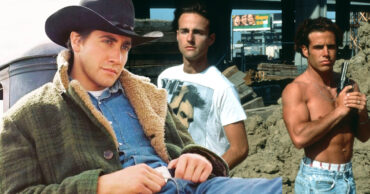
When it comes to studio films these days, there are certainly prerequisites that seemingly have to be checked off before it ever makes it into a theater, all of them designed from the ground up to maximize its potential profits at the box office. This is why movies tend to run as close to 90 minutes as possible; shorter run times mean more screening throughout the day. This is also why they tend to star the same dozen or so popular faces that we’ve all grown accustomed to seeing on the big screen, as people are more willing to spend money to see actors they’re familiar with.
And of course, this is why every major film hitting theaters ends up with a PG-13 rating. If you’re spending the ridiculous sums of money that it takes to put together a movie these days, it only makes sense that you would want as many people to see it as possible. And when that movie happens to be a long-anticipated sequel to a cornerstone of the highly bankable science fiction genre — and it also happens to start an expensive pair of A-list actors — it simply doesn’t make sense to cut teenagers out of your marketing considerations.

After all, teenagers are the ideal movie-going audience. They’re old enough to hold down jobs, but have low day-to-day expenses due to by and large living with their parents. They’re eager for the kind of spectacle-driven entertainment that Hollywood can provide, and can afford to not be as picky as somebody on a tighter budget.
Despite all this, however, Hollywood has increasingly been moving toward a more holistic approach with their film properties, awarding higher ratings to movies that in years past would have been seen as disposable teen fodder. Hugh Jackman superhero flicks, Ryan Reynolds action-comedies, and now Harrison Ford sci-fi thrillers have all found themselves with R — not PG-13 — ratings.

Deadpool and Logan made more sense receiving the R treatment. They each had lower budgets to off-set the inherent risk of the more restrictive rating. Blade Runner 2049 does not. While we won’t know for a while yet exactly how much the movie cost to produce, industry reports have it ranging somewhere around $150 million.
The typical rule of thumb for determining what numbers a movie has to post at the box office before it starts to turn a profit is double its budget. That covers a studio’s investment in both advertising and distributing the film. This means that Blade Runner 2049 would probably need to hit $300 million worldwide in order to start making a profit. While that’s easy enough for a PG-13 blockbuster to make, with a larger pool of movie-goers to pull from, that’s a fairly tall order for an R-rated film reviving a 35-year-old franchise.

Maybe they’re hoping that the Blade Runner name will have enough pull with adult audiences to push it through to box office success. Or perhaps the movie doesn’t cost nearly as much as its dizzying array of special effects and A-list talent might otherwise suggest.
Either way, the fact that it’s getting away with this seems nothing short of a minor miracle. Denis Villeneuve has consistently proven that he is a sober visionary capable of translating mature themes and graphic violence into critical and monetary success with movies like Prisoners and Sicario under his belt. That’s just the kind of freedom and vision that this franchise needs.
 Follow Us
Follow Us





